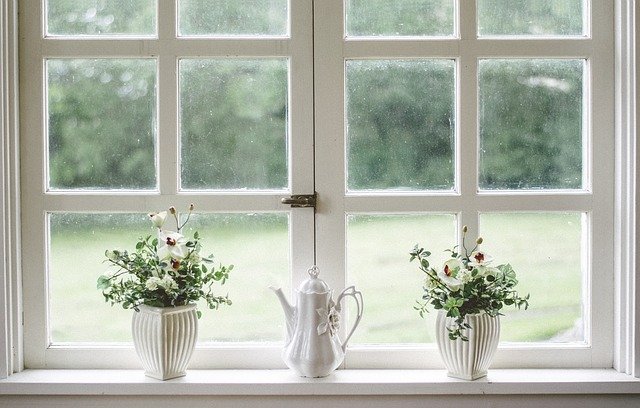Understanding how to bring your carbon footprint down is essential in today’s environmentally-conscious society but with energy costs rising, it’s also important for our wallets. Luckily, there are sustainable upgrades you can make to your home that don’t require you to find a new energy provider.
As the UK has some of the least energy-efficient housing in Europe. There’s never been a better time to make some sustainable upgrades. Here are some points to consider that can help you save money and keep your home on the greener end of the spectrum for the future.
How to tackle rising energy costs?
Switch suppliers sooner rather than later
Energy prices have risen significantly in recent months, and they’re due to go up again towards the end of 2022. But finding a cheaper deal by switching suppliers will be a challenge. Making sustainable switches now has the additional benefit of retaining heat in the home and bringing your heating and energy costs down. In turn, these changes can help minimise the impact of rising fuel costs and keep your bills more balanced and predictable.
Prepare for the colder months ahead
Once winter and the colder months arrive. You’ll be in the depths of cold weather and facing larger bills which will mean it’s harder to find additional cash to make upgrades to your home. By doing your sustainable upgrades sooner you will ensure that your home is set up and ready for those colder months ahead. You will also be in a much better place to avoid larger bills.
Hold an enviable position in the property market
When you make strategic changes to your home. You will be able to increase the value of the property when the time comes to sell up and move on. A staggering 70% of people are seeking eco-friendlier properties to help manage their own carbon emission. But also because running and maintaining a sustainable home is easier and more affordable, offering a win-win solution.
What energy-efficient changes can you make?
Upgrade your windows
When it comes to energy efficiency, your windows should be the first port of call. Double glazing may require an initial outlay, but it will save you pennies in the long-term and will help to retain heat in the winter. Double and triple glazing can help to prevent significant heat loss in your property, and you can enhance this benefit even further with thermal energy-saving blinds or curtains.
Windows serve as an insulating barrier to retain the heat inside the home and if you install low emissivity glass. It can save you even more in cooling and heating costs. Choosing recyclable materials for the frames of your windows will also help to make these sustainable upgrades more eco-friendly.
Insulate your home
Heat will escape quickly in your home if you don’t insulate properly, especially if your property was built before the 1990s as it’s more likely to have cavities and gaps in the walls which can make heat loss more pronounced. To keep more heat inside your home and reduce the need for additional heating, it’s recommended that you fill any gaps with insulating material. That might mean insulating a cavity wall, improving your loft insulation and other connecting areas of your property such as your garage that can easily increase your utility costs if you neglect them.
Use smart devices
Smart devices are a fantastic addition to your home when it comes to increasing sustainability, because they can significantly alter how much energy your property uses. The likes of plugs, thermostats and lights can all be controlled from your smartphone and enables you to maintain a comfortable home without using excessive energy in the process.
Smart plugs are another option that can be used with any existing appliances, so you can control them with the same app on your phone, but without as much initial outlay as with smart devices.
Be aware of your power consumption
Smart meters are an increasingly useful and accessible in-house visual display unit that allow householders to be far more conscious of the day to day power consumption in the home. Given that we now rely on so many modern appliances for both domestic and hybrid working purposes, a visual indicator of the power usage and cost implications can help to track pinch points and begin to highlight where reductions may be possible.
Even little changes in a modern home, such as fully powering down all appliances that don’t need a maintenance background power will soon assist with a smarter, sustainable and more cost-effective home.
Change your bathroom
You don’t need to undergo a full bathroom renovation to make this area of your home a sustainable upgrade and eco-friendly. In fact, you can save a lot of money simply by making a few small but effective swaps, such as with the toilet and showerhead.
A fact many people don’t realise is toilets account for nearly 30% of the total water consumption of a home, so by installing a low-flow toilet, you can actually save a lot of money and water, and help the environment in the process. Likewise, using a low-flow showerhead will cut your water consumption further and save energy, since the boiler won’t need to heat as much water as before.
Replace your front door
A new front door might not be top of your list when it comes to sustainability. But actually the material your door is made from can have a big impact on your heating and cooling costs. By choosing an energy-certified steel door, you can benefit from a durable door that offers the security you want but also retains heat in the winter and cools in the summer. A new front door updates the exterior of your property, increases kerb appeal, but most importantly reduces the carbon footprint of your home.
There’s never been a better time to save money by going green. While some improvements to your property will require a little money upfront, the money you’ll save in the long-term will make it worthwhile. Even if you’re on a tight budget. There are ways to make relatively small and low-cost changes that will have a greater impact overall on both your financial outgoings and your everyday sustainable living.


